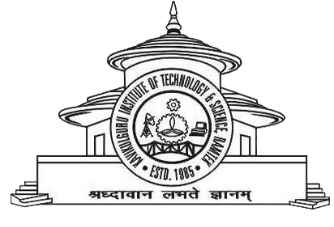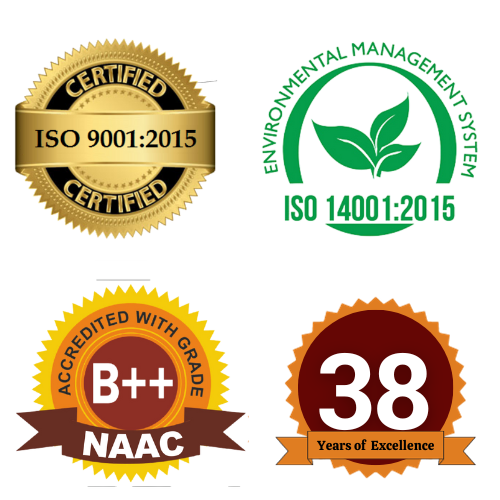Library


The library is said
to be an axle in any Educational Institute, where all other
activities rotate around it. It is omni-directional fountain for
quenching the scholastic thirst of the student and faculty of
all departments. KITS library performs this role excellently,
with wide collection of more than 60000 rare and valuable
reference books, hand books whose cost estimated to be around
1.5 crores, and subscription of 150 journals from all over the
world including famous publishers like ISTE, IETE, IEEE, ASCE,
ASME etc. library functions from 9.00 am to 10.00 pm.
The library also
has book bank facility to serve the needy students (SC/ST) it is
financed by the Govt. of Maharashtra and Institute has also
operates Book Bank Scheme for all students apart from general
library. All activities of library are automated with the help
of SLIM21 software developed by M/s Algorithms, PUNE, including
issuing of books with bar code scanners. Student can search the
library data base through the intranet and know the availability
of books and journals etc. They can reserve the books online.
Faculty members are eligible for borrowing 10 books and 2
journals and students can borrow 4 books at a time. Audiovisual
library with colour T.V. and VCR, Multimedia facility with
around 500 CD’s and Xerox facility also available.
Library


The library is said to be an axle in any Educational Institute, where all other activities rotate around it. It is omni-directional fountain for quenching the scholastic thirst of the student and faculty of all departments. KITS library performs this role excellently, with wide collection of more than 60000 rare and valuable reference books, hand books whose cost estimated to be around 1.5 crores, and subscription of 150 journals from all over the world including famous publishers like ISTE, IETE, IEEE, ASCE, ASME etc. library functions from 9.00 am to 10.00 pm.
The library also has book bank facility to serve the needy students (SC/ST) it is financed by the Govt. of Maharashtra and Institute has also operates Book Bank Scheme for all students apart from general library. All activities of library are automated with the help of SLIM21 software developed by M/s Algorithms, PUNE, including issuing of books with bar code scanners. Student can search the library data base through the intranet and know the availability of books and journals etc. They can reserve the books online. Faculty members are eligible for borrowing 10 books and 2 journals and students can borrow 4 books at a time. Audiovisual library with colour T.V. and VCR, Multimedia facility with around 500 CD’s and Xerox facility also available.
CENTRAL LIBRARY - INFORMATION

|
Library Carpet Area |
1020 Sqm |
|
Year of Establishment |
1985 |
|
Seating Capacity |
200 |
|
Library Timings |
9am-9pm (upto 10.00 p.m. during the University Examinations) |
|
Working Days |
All Days |
|
Library staff |
10 |
| Working Shifts |
3 |
|
No. of Titles |
17474 |
|
No. of Volumes |
63245 |
|
Periodicals National, International |
88 |
|
Newsletters |
22 |
|
Newspapers |
13 |
|
Video CDs |
1200 |
|
Book CDs |
1500 |
|
Bound Volumes |
2460 |
|
Project Reports |
3000 |
|
No. of Computers |
12 |
|
BBS (SC/ST) Books |
9693 (Rs.27,10,074) |
|
IBBS Books |
13180 (Rs.31,83,342) |
|
|
|
Library Budget |
10 Lakhs/pa |
|
No. of BTs for Students |
4 |
|
Daily Book Transactions |
200 |
|
Library Software |
SLIM21 |
|
Average No. of Visitors |
200/day |
FACILITIES AVAILABLE

- Bar Code System
- Book Bank Scheme (SC/ST)
- Institute Book Bank Scheme (General)
- Internet/Intranet/Multimedia
- Delnet Connection for accessing online
- Xerox/Copy Printer/Scanners
- Laser Printing
- Audio-visual (TV/VCR/VCD)
- Online Public Access Catalogue (OPAC)
- Lamination/Spiral Binding Machine
- Automated Book Transaction
- Biometric Attendance and Smart Card System
- CCTV
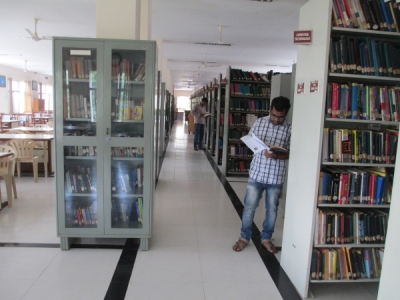
SERVICES

- Internet Service
- Retrieval of CD-ROM Databases &,online databases ( http://www.delnet.nic )
- Viewing of Video cassettes, DVDs through TV & CR/DVD

Digital Library Resources

- COMPUTER TECHNOLOGY
- CIVIL ENGINEERING
- ELECTRONICS ENGINEERING
- MECHANICAL ENGINEERING
- PHYSICS
- MANAGEMENT SCIENCE
- AUDIO CASSETTES
DATA STRUCTURES
- Introduction: What is an algorithm?
- Program algorithm data structures & software life cycle
- Abstract data type (ADI) What & Why?
- Performance analysis of algorithms & programs
- Array ADI
- Ordered lists & Polynomial ADTS
- Polynomial ADIS & its implementation
- Sparse matrices & multidimensional arrays
- Stacks & queues
- Stacks ADI & its implementation
- Queue ADI & its implementation
- Application of stack
- Expression evolution using a stack
- Linked lists
- Pointers & linked lists
- Implementation of multiple stacks & queues using Linked lists
- Polynomial implementation on using linked lists
- Circulated doubly linked lists
- Application of linked lists (e.g. sparse matrices Equivalence relationship)
- Application of linked lists (e.g. equivalence Relationship & dynamic memory management)
- Binary buddy system for memory management
- Generalized list
- Generalized list Garbage collection
- Tree data structures k
- Binary tree data structure
- Traversal of binary trees
- Counting binary trees
- General tree or forest binary tree
- Sets implementation using trees decision trees
- Game tree
- Game tree & counting binary tree
- Graphs: some common definitions
- Representation of graphs & some common operations
- Connected components spanning
- Searching & sorting
- Internal sorting algorithms: insertion sort, quick Sort
- Complexity of merge sort & heap sort
- Heap sort symbol table
- High balanced binary trees
- Faculties India: The world of computer-I
- Faculties India: The world of computer-II
Introduction To Database Management Systems By Prof. P.P. Chakrabarti
- Introduction-I
- Introduction-II
- ER model-I
- ER model-II
- ER model & relational model
- Relational algebra-I
- Relational algebra-II
- Relational calculus-I
- Relational calculus-II
- Overview of SQL-I
- Overview of SQL-II
- Overview of SQL-III
- Overview of SQL-IV
- Integrity constraints
- Functional Dependencies-I
- Functional Dependencies-II
- Functional Dependencies-III
- Database decomposition-I
- Database decomposition-II
- Database decomposition-III
- Database decomposition-IV
- File systems-I
- File systems-II
- File systems-III
- File systems-IV
- File systems-V
- Recovery from failure-I
- Recovery from failure-II
- Recovery from failure-III
- Concurrency Control-I
- Concurrency Control-II
- Concurrency Control-III
- Concurrency Control-IV
- Concurrency Control-V
- Concurrency Control-VI
- Concurrency Control-VII
Software Engineering: By Dr. Rajib Mail
- Introduction to software engineering
- Life cycle models-I
- Life cycle models-II
- Software project management-I
- Software project management-II
- Software project management-III
- Software project management-IV
- Software project management-V
- Requirement analysis and specification
- Algebraic specification
- Software design
- Function oriented design-I
- Function oriented design-II
- Function oriented design-III
- Function oriented design-IV
- Object oriented design-I
- Object oriented design-II
- User interface design-I
- User interface design-II
- User interface design-III
- User interface design-IV
- User interface design-V
- Coding & testing-I
- Coding &
testing-II
102. Coding & testing-III
103. Coding & testing-IV
104. Reliability and quality assurance-I
105. Reliability and quality assurance-I
106. The evolution of computing
107. Types of data files by faculty of India
108. Information system
- Triaxial Shear Test-1 to 4: Gulhati S.K.
- A Herberg’s Limits: Gulhati S.K.
- Triaxial Test-I & II
- Water Pollution: Better Earth
- Introduction to Engineering Drawing: ET & T
- Direct Shear Test
- Water Pollution Dewatering By Well Points
- Water Quality Surveillance: AICTE
- Pile Foundation
- Dewatering by Well Points
- CBR Test
- Concrete Construction Practices
- Form Work of Scaffolding
- Introduction to the course
- Digital signals: delta modulation
- Digital representation of analog signals: pulse code Modulation
- Digital representation of analog signals:
- Introduction to line coding
- Special properties of line codes: general relations
- Special properties of line codes: on-off/polar/bipolar signaling
- Special properties of line codes: duo binary, Manchester & HDB codes
- Base band pulse shaping Nyquist’s first criterion
- Base band pulse shaping raised of pulse
- Partial response signaling:
a) Duo-binary & modified b) Duo-binary pulse shaping - Precoding for duo binary modified duo binary systems
- Precoding for modified duo binary systems & general partial response signaling
- Binary base band digital modulation techniques
- M’ary base band digital modulation techniques
- Pass band digital modulations I: PSK & QPSK
- Pass band digital modulations II: offset QPSK
- Pass band digital modulations III: minimum shift keying
- Pass band digital modulations IV: MSK Pass band waveforms for M’ary signaling
- Pass band modulations for band limited channels
- Base band & pass band digital demodulation: general issues & concepts
- Digital demodulator: matched filters
- Matched filtering & coherent demodulation
- Coherent demodulation of binary waveforms
- Demodulations for binary waveforms & coherent & non
coherent
receivers for orthogonal signaling (OOK & FSK) - Performance analysis of binary digital modulations:
signals & noise
statistics in coherent & non- coherent receivers. - Error, rates for binary signaling: coherent receivers
- Performance & non coherent FSK & DPSK
- Demodulation of DPSK & many signals
- Performance of M’ary digital modulations-I
- Performance of M’ary digital modulations-II
- Introduction to information on theory
- Source coding
- Error tree communication over a noisy channel
- The concept of channel capacity
- Elements of error correcting codes-I
- Elements of error correcting codes –II
- Introduction to the course & basic concepts
- Signals & their transformation
- Elementary Signals in the discrete time domain
- Characterization of systems
- Basic concepts of linear time invariant systems
- Convolution invertibility, causality & stability
- Stability, unit step response & differential equations
- Systems described by differential & difference equations
- Fourier & his series
- More about Fourier series (with comfortable questions)
- Those uncomfortable about the existence of Fourier series & some more
- Introduction to Fourier transforms
- Fourier transform of periodic functions & fourier transform properties
- More properties of fourier transformation
- Anatomy of a class test & a continuous look at the properties of F.T.
- Modulation, convolution & other interesting properties of F.T.
- A deeper look at the modulation property of F.T.
- Fourier analysis of discrete time signals & systems: the beginning
- More about the fourier transform of discrete time signals
- Solutions to minor test 1 problems and further look into the properties of D.T.F.T.
- Convolution, modulation & other properties of D.T.F.T.
- Farewell to discrete time fourier transform & introduction sampling
- More about sampling
- Introduction to Laplace transformation
- Region of convergence of Laplace transform &properties of Laplace transform
- Properties of Laplace transform
- Concluding discussion on Laplace transformation
- Introduction to `Z’ transform
- Properties of `Z’ transform
- Further discussion on properties of `Z’ transform
- Solutions to class test 2 & concluding discussion on `Z’ transform
- Introduction to random signals & probability
- Probability functions
- Solutions to minor test 2 & concluding discussion on `Z’ transform
- Some more about PDFS & PDTS
- Classification of random process & introduction to correction
- More about correction functions
- Cress correction functions & their properties
- Introduction to spectral density
- More about spectral density
- Response of linear systems to random inputs
- Frequency domain analysis of LTI systems excited by random inputs
- Advanced SQC techniques & special inspection machines
- Audio visual techniques & interpersonal communication
- Basics of electricity and its utilization
- Condition monitoring and condition bases maintenance
- Communication for engineers
- Electrical safety
- Executive decisions and quantitative techniques
- Fiber optics
- Hemorphology microcirculation
- Information systems
- Introduction to oscilloscope
- Introduction to V-N diagram
- Medical instrumentation
- Optical fibre communication
- Oral presentation of a technical report
- PCB design, fabrication and maintenance
- Pile foundation
- Remote sensing
- Stress analysis and weld design
- Super conductivity
- Telematics
- U-state method
- Discrete time signals and systems.
- Discrete time signals and systems
- Difference equations and transforms
- Study of sampled systems in frequency domain
- Relation between continuous and sampled systems
- Z-transforms and introduction toIIR digital filter
- Introduction to filters
- Design of analog and digital filters-I
- Design of analog and digital filters-II
- Design of analog and digital filters-III
- Design of analog and digital filters-IV
- Design of IIR filter
- Design of FIR filer
- Design of discrete fourier transform
- DFT-FFT algorithms-I
- DFT-FFT algorithms-II
- DFT-FFT algorithms-III
- Computer aided design-I
- Computer aided design-II
- Computer aided design-III
- Computer aided design-IV
- Digitalizing techniques
- Structures of FIR & IIR systems-I
- Structures of FIR & IIR systems-II
- Effects of quantisation in digital filters-I
- Effects of quantisation in digital filters-II
- Magnitude phase relationship in digital filters-I
- Magnitude phase relationship in digital filters-II
- Hilbert transform relation for magnitude & phase-I
- Hilbert transform relation for magnitude & phase-II
- Complex Cepstrum & homomorphic systems
- Homomorphic convolution-I
- Homomorphic convolution-II
- Tutorial-1
- Tutorial-2
- Turorial-3
- Introduction
- Characteristics of speech and video signals-I
- Characteristics of speech and video signals-II
- Digitization of signals: lowpass sampling and reconstruction
- Digitization of signals: band pass sampling and quantization
- Quality of signals with uniform quantization
- Quality of signals with non-uniform quantization
- Optimum and adaptive quantizers
- Pulse code modulation and PCM standards for speech, audio and video
- PCM standards for video and transmission errors in PCM
- Parametric modeling and prediction of signals-I
- Parametric modeling and prediction of signals-II
- Parametric modeling and prediction of signals-III
- A worked out example and an assignment on modeling
- Quality measures for coded signals
- Differential pulse code modulation (DPCM)-I
- Differential pulse code modulation (DPCM)-II
- Adaptive DPCM (ADPCM)-I
- Adaptive DPCM (ADPCM)-II
- A lattice algorithm for speech prediction
- Sub-band coding-I
- Sub-band coding-II
- Transform coding (TC)
- Optimum bit allocation in TC and the DCT
- Run-length coding
- Vector quantization (VQ)
- Types of VQ and code book design
- Hybrid coding os speech: Abs-LPC coding
- Abs coding of speech
- The RPE-LTP
- The CELP coder
- Hybrid coding of pictures: JPEG-I
- Hybrid coding of pictures: JPEG-II
- The H.261 video coder
- Introduction to digital image processing
- Image digitization & sampling-I
- Image digitization & sampling-II
- Basic relationship between pixels
- Image interpolation and resampling
- Application of image sampling
- Prospective transformations
- Camera models
- Stereo imaging
- Search space analysis for stereo
- Error analysis for stereo
- Introduction to image transforms
- Separable transforms
- Discrete fourier transforms
- Properties of DFT
- Discrete cosine transforms & Hadamard transforms
- Properties of Hadamard transforms
- K-L Transforms
- Comparison between image transforms
- Application of Transforms in Image coding
- Image enhancements: point operations
- Histogram equalization
- Spatial equalization
- Sharpening Filters
- Edge detection operations
- Transform-domain filtering
- Introduction to image restoration
- Degradation model in discrete domain
- Image restoration using inverse filtering
- Image restoration using wiener filter
- Constrained least-Square restoration
- Image Segmentation
- Global Edge-Linking using Hough Transforms
- Segmentation based on tresholding
- Region-oriented segmentation
- Representation of Regions
- Boundry descriptors
- Region descriptors and texture
- Statistical & structural approach to texture
- Morphological image processing-I
- Morphological image processing-II
Digital Communication:
a) Non-uniform quantization in PCM
b) Quantization noise in delta modulation & time division Multiplexing
Digital Signal Processing: By T.K. Basu
Digital Voice & Picture Coding: By R.V. Rajakumar, E&ECE Dept
DIGITAL IMAGE PROCESSING: By Prof. S. Sengupta:
- Aeromodelling-I, UGC
- Aeromodelling-II & III, UGC
- CNC machines: introduction to CNC machines-I, TTTI, Madras
- CNC machines: Features & elements-II & III, TTTI, Madras
- NC-CNC-I to VII
- Machine with brains & robotics as human beings, ET & T
- Advanced SQC techniques & special inspection machines, AICTE
- Stress analysis and weld design, AICTE
- Introduction to V-N diagram
- Metabolic defects and their testing, AICTE
- Wonders of polymers- 7 nos., AICTE
- Cathode ray oscilloscope-I,: UGC
- Cathode ray oscilloscope-II: UGC
- Cathode ray oscilloscope-III: UGC
- Cathode ray oscilloscope: ET & T
- a) The quantum idea
}
b) Photons } ET & T
c) Matter waves } - Life & work of C V Raman, Part-IV, Raman the scientist: ET & T
- Classified Mechanics-I, Halileo’s Principles of Relativity-A: UGC
- Classified Mechanics-II, Galileo’s Principles of Relativity-B: UGC
- Classified Mechanics-IV, Newton’s Second Law: UGC
- Classified Mechanics-V, Pseudo forces
- Classified Mechanics-VII, Galilean invariance
- Cyclotron
- Prelude to lasers
- a) The particle
model
}
b) The wave model } TVO & ET & T
c) The electromagnetic modes } - Liquid crystals-Part 2: UGC
- Shastras & Modern Management – Dr. M.B. Athreya
- International Trade Regime & India – Prof. Bibek Debry
- Changing Role Of Government In Business – Dr J.Ramesh
- Impart Of New Technologies & Industries On The World Of Business – Dr. Tom Cannon
- Consumer Markets In India – Prof. S.C. Rao
- Measuring Employee Satisfaction: A Case Study – M. Parkar
- Competing In The 90s: Focus On Customer Orientation – Arvind Aggarwal
- New Trends In The Financial Section – Lalith Khanna
- Tqm The Human Way – K.K. Muthu
- Management Development Ofr The 2187 Century – C. Carnill
- The Emerging Consumer Marketing Strategy Imperative - A.K. Marfatia
- Indian Vision – K.L. Chugh
- Liberation: Problems & Prospects – Abid Hussain & Etc.
- Introduction, Application & Demonstration – A. Hussain &
- Marketing High Technology – Jayantha Chatterjee
- Knitting A New Socio-Economic Fabric: The Arts Of Managerial Leadership
- Systematic Preparation For Negotiation – Michael Hudson
- Globalized India – J.N. Rao
- Multimedia – Vimlendu Varma
- The Balanced Sheet
- Financial Managerial & Planning
- Management Accounting & Decision Making
- Product Design
- Nice Idea What About The Finance
- The Packaging Design Process Dream To Reality
- Computerized Accounts
- Quality Circles
- Factory For The Future
- Seven Crises In Business – Friendich Neumann Foundation, Germany
- Starting Crisis
- Cash Crisis
- Delegation Crisis
- Leadership Crisis
- Financial Crisis
- Prosperity Crisis
- Management Succession Crisis Planning For Competition & Growth
- The World Of Women Entrepreneurs –
The Entrepreneurs Developments - Institute Of India - Jewel From The Dust: Making Of Rural
Entrepreneurs
– The Ford – Foundation, New Delhi - Dewatering By Wall Points – Manoj Dutta
- Globalization Of Markets: A Canadian Perspective – ET & T
- a) Humanizing Work b) Management Information Systems
- International Marketing: Institutional Infrastructure
– Et & T Working Capital Management – Et
& T
a) The World Bank }
b) The International Monetary Fund }
c) International Loans } ET & T
d) The World Monetary System } - Entrepreneurship Development Public Grievances
- ICFAI The Institute Of The Future – ICFAI
- The DBI Program, The CFA Program, The MBFS Program
- TOEFL LISTENING COMPREHENSION
SECTION 2
PRACTICE TESTS 1-6 - TOEFL (HOW TO PREPARE THE TEST OF
ENGLISH AS 2
A FOREIGN LANGUAGE BY GOODMAN & INCE. - BARRONSHIP FOR THE TOEFL TEST BY SHARPE P J 6
- A HAND BOOK OF PRONOUNCIATION OF
ENGLISH 4
WORDS, PART 1 & 2 BY SETHI & JINDAL
Staff

|
S.No. |
Name |
Designation |
|
01. |
Shri A. Anja Reddy |
Librarian |
|
02. |
Shri.N.Chandra Reddy |
Asst. Librarian |
|
03. |
Shri.Shekhar N. Bisan |
Jr, Assitant |
|
04. |
Mrs. Rina A. Zod |
Library Assistant (Trainee) |
|
05. |
Shri P.K.Dongre |
Library Attendant |
|
06. |
Shri S.K.Bisane |
Library Attendant |
|
07. |
Shri. Vasant Pimpalkar |
Attendant |
|
08. |
Shri. Mahadeo Lokhande |
Attendant |
|
09. |
Shri Jagdesh Dahare |
Attendent |
Shri.A.Anja Reddy,
Librarian
[email protected]
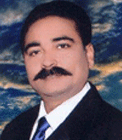
-
Qualification : B.Sc.from Osmania University, Hyderabad. B.Lib.Sc. from Rani Durgavati University, Jabalpur, M.Lisc. from Annamalai University, Tamilnadu, M.Phil from Alagappa University, Karaikudi and pursuing Ph.D.
-
Experience : Joined this Institute in 1991. He has 26 years of total experience.
-
Publications : Published 08 technical papers in National and International conferences.
-
Membership of Professional Bodies : Life Member of ISTE, ILA.
-
Fields of Interest : Library Automation, Academic Librarianship.
-
Other : Attended 03 Short Term Training Programmes (one month each) in the field of Academic Librarianship.
Shri.Naredla Chandra Reddy
,
Asst. Librarian
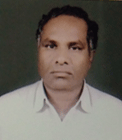
-
Qualification :B.A. (EPP) from Osmania University, Hyderabad. B.Lib.Sc. from Rani Durgavati University, Jabalpur, M.Lib.Sc. from Madhurai Kamaraj University, Madhurai.
-
Experience : Joined this Institute in 1995. He has 22 years of total experience.
-
Publications :Published 01 technical papers
K. Sunitha Devi ,
Asst. Librarian
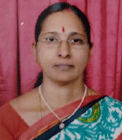
-
Qualification :B.Sc.from Osmania University, Hyderabad, B.Ed. Sri Venkateshwara, University Thirupathi, B.Lib.Sc., M.Lib.Sc. from Madhurai Kamaraj University, M.Phil Alagappa University (Library Science).
-
Experience : Joined this Institute in 1999. She has 19 years of total experience.
-
Publications :Published 02 technical papers in National Conference.
GALLERY

Alphabetical List of Journals

Alphabetical List of Journals
-
Alphabetical List of Journals
- Alphabetical List of Journals- Click Here
